The two Explorer-class were experimental submarines ordered in 1947 for the Royal Navy as an early underwater test-bed for a new propulsion system using hydrogen peroxide (HTP) for greater underwater endurance and speed. The construction of the two Explorer-class combined steam turbines powered by the catalysed interaction of HTP and diesel oil. They used the Porpoise-class hull, heavily modified to feature retractable superstructure fittings. They never really were “operational” in the RN as being devoid of torpedo tubes or radar and had a single one periscope for standard operations plus backup diesel engines to recharge batteries and surface navigation. But just like the Germans, the RN rejected HTP as being too dangerous to use. The quest for AIP was postponed with the development of nuclear power and HMS Dreadnought, the first British SSN launched in Oct. 1961, not long after the Explorers were commissioned.
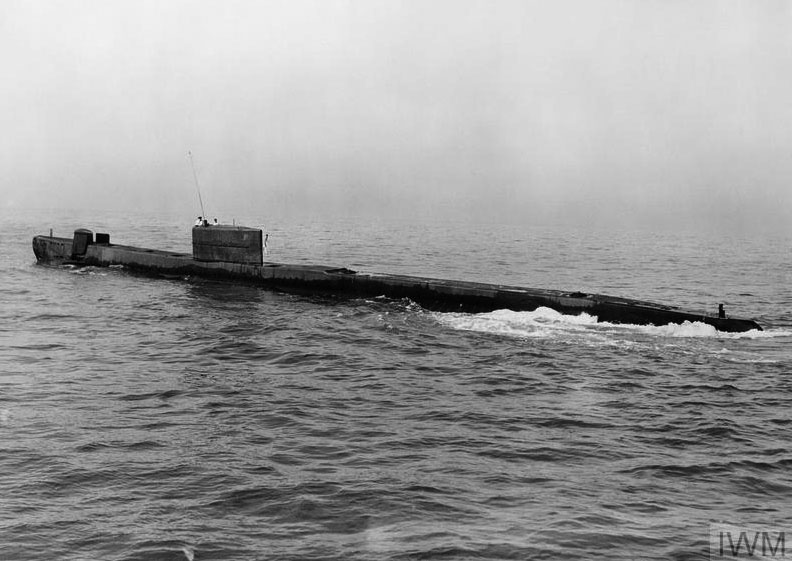
The Explorer class underway – Imperial War Museum (IWM)
Development
It was a continuation of the work started in Germany during the Second World War, that ultimately led to create the “Walter cycle”, never adopted. Instead, the revolutionary U-Boote Type XXI simply adopted twice as much electrical power. These experimental boats could be compared to the earlier USS Albacore we just saw, albeit had the latter tested hull shapes only. The technology was promising and the start of these studies, in addition to ample documentation collected alongside Operation Surgeon, was compared to U-1407 (a 300 tons Type XVIIB submarine testing the Walter system), scuttled at the end of the war, salvaged and recommissioned into the Royal Navy as HMS Meteorite. She was duly tested and examined. The process ended in 1947 when two experimental boats were ordered by the admiralty.
This kickstarted a long British development programme (about ten years) on this tech, which resulted in the two experimental submarines Explorer and Excalibur, which construction started at last at Vickers Barrow in 1953 (presumably).
Built for speed trials only, they were purely experimental, were both unarmed submarines, which freed useful space and simplified the design. Their high-test hydrogen peroxide engines were derived from the ones used on the Type XVIIb and adpated, coupled with standard steam turbines, unusual on submarines (at least since the mediocre K class!). The steam was generated by heat cause by the interaction of the high-test hydrogen peroxide (HTP) with a catalyst, and standard diesel oil being injected. Experiments with AIP were going on in Germany since 1911 already, with laboratory experiments of closed-cycle propulsion systems not using air. As AIP started to really became mainstream from 2011 that’s one technology that needed a century long cycle to mature.
Design of the class
Hull and general design
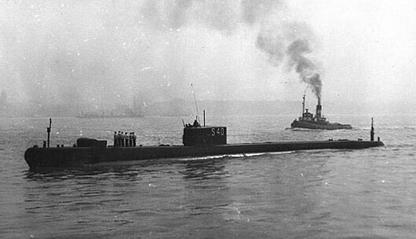 To gain time, the design team behind the submarines started not with a blank page but with the already streamlined, proven Porpoise class hull. These attack submarines were built in parralel by 1956–1959, so these had the latest hull design available. They were much smaller than the latter (2,080/2,450 tons 290 x 26 x 18 ft (88 x 8.10 x 5.5 m)). The Explorer class indeed only displaced 780 tons surfaced and 1,000 tons submerged for a lenght of 54 m (178 ft), smaller beam of 4.78 m (15 ft 8 in) and 3.4 m (11 ft) draft. The shaped were close, so they were basically “miniature Porpoise”. The shapes were there, but everything was scaled down. Accomodations also started on the same basic design but were of course much altered. What was freed by the absence of the torpedo room was used for crew accomodations notably. They were modified with retractable superstructure fittings for streamlining. No details given.
To gain time, the design team behind the submarines started not with a blank page but with the already streamlined, proven Porpoise class hull. These attack submarines were built in parralel by 1956–1959, so these had the latest hull design available. They were much smaller than the latter (2,080/2,450 tons 290 x 26 x 18 ft (88 x 8.10 x 5.5 m)). The Explorer class indeed only displaced 780 tons surfaced and 1,000 tons submerged for a lenght of 54 m (178 ft), smaller beam of 4.78 m (15 ft 8 in) and 3.4 m (11 ft) draft. The shaped were close, so they were basically “miniature Porpoise”. The shapes were there, but everything was scaled down. Accomodations also started on the same basic design but were of course much altered. What was freed by the absence of the torpedo room was used for crew accomodations notably. They were modified with retractable superstructure fittings for streamlining. No details given.
No plans or blueprints found unfortunately yet.
Powerplant
It was composed ot three distinc elements:
-The HTP unit (High Test Peroxide) steam raising plant, using a catalyst to react with injected standard marine oil fuel. No data yet as how much the system differed from the German Walter type unit. Its role was to generate superheated steam as any boiler.
-The second element were two steam turbines, of a small type (here again no detail found) but they had to fit inside the cramped hull. This ensemble drew two shaft propellers through a geared reduction box and transmission.
-The third element were a pair of diesels usable when surfaced, at probably around 10 knots. This was purely utilitarian to get in and out of port and to test diving areas.
The main reason for these boats to be built proved a general disappointment, apart for the speed reached underwater. In her first underwater trials, HMS Explorer managed t passe the 25 knots mark. To compare, the Porpoise class managed 12 kn surfaced and 17 kn submerged, to the 25+ knots reached by these boats seemed miraculous.
But operations proved hazardous to say the least, albeit fortunately there never was any fatality.
⚙ specifications |
|
| Displacement | 780 tons surfaced; 1,000 tons submerged |
| Dimensions | 54 x 4.78 x 3.4m (178 x 15 ft 8 in x 11 ft) |
| Propulsion | 2 shafts Diesel-electric/HTP steam plant, steam turbines |
| Speed | 46 km/h (25 kn) (submerged) |
| Range | Unknown (c3,000 nmi) |
| Armament | None |
| Sensors | None |
| Crew | 49 |
Assessment: The quest for AIP
HMS Excalibur was commissioned in March 1958 and her sister Explorer two years earlier on 28 November 1956 and both were indeed very fast boats underwater, topping at 26.45 knots or 49 km/h over 3 hours runs, 12 knots or 22 km/h on a single turbine. These unusual boats soon received nicknames and associated jokes. Since hydrogen peroxide was known at the time to be used as hair bleach, they became the “Blonde class”. The Royal Navy would also train with them their ASW frigates to deal with fast moving underwater targets such as Soviet subs. But ultimately the HTP revealed itself a hazard, triggering several explosions. So much so that after a few years, HMS Explorer was renamed “HMS Exploder” and Excalibur “HMS Excruciater”. Too dangerous as a main power source it was then sidelined to power torpedoes, but there again, it was not that successful, causing the loss of HMS Sidon and later of the more famous Kursk.
It’s basically nuclear power that doomed the search for AIP (Air Independent Propulsion) using chemical solutions. HTP was abandoned as unsafe, as the Germans decided in 1944. Since work to do to convert these subs as proper military diesel-electric submarines seemed just too costly at the time, the first was decommissioned and sold in 1965 for £13,500 to Thos. W. Ward as Excalibur later. To compare their original cost was £2,000,000 back in 1956.
The last British conventional subs were the Upholder class with four boats built in 1986–1992. They were conventional diesel electric types and had no successors. Other countries developed the concept of AIP over the years, with pioneers such as Germany and Sweden, and it became widespread and much safer as a technology, liquid oxygen being the generally preferred solution. It is now a viable alternative to costly nuclear powered submarines.
From the submarine heritage center
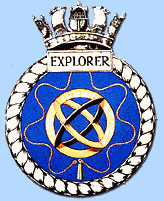 “Towards the end of WWII, the German scientist Dr. Helmuth Walther had developed a revolutionary new submarine propulsion system based on the highly volatile chemical High Test Peroxide (H.T.P.).
“Towards the end of WWII, the German scientist Dr. Helmuth Walther had developed a revolutionary new submarine propulsion system based on the highly volatile chemical High Test Peroxide (H.T.P.).
It was a steam generating plant, working on the principle that H.T.P. when passed over a catalyst produced oxygen and water. This was then fed into a combustion chamber, sprayed with diesel fuel, the resulting mixture generating steam that powered a steam turbine. When installed in a submarine, the operation of this new system was described as “exciting”.One of the four Walther boats (U1407) built during 1945 was scuttled in Cuxhaven on May 5th 1945. Raised by the British in June 1945 and brought back to Barrow-in-Furness, to be refitted with a virtually new complete set of machinery, also captured in Germany.
Re-commissioned as HMS/M Meteorite, she carried out a series of trials during 1946, under the guidance of Dr.Walther and his original team from Germania-Werft, Kiel. These trials were sufficiently encouraging for the Admiralty to place an order for experimental Walther boats, based on the German Type XXVI.
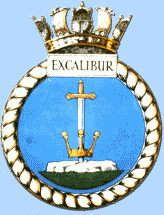 The boats were named Explorer and Excalibur.
The boats were named Explorer and Excalibur.
Meteorite was broken up by Thomas Ward Limited at, Barrow-in-Furness in September 1949.
The new boats for one reason or another were far to long in building, and in spite of achieving phenomenal underwater speeds for the day, they were overtaken by the American development of nuclear power for submarines. Consequently, these submarines followed their German forebear into Thomas Ward’s breakers yard.
Although part of the 3rd Submarine Squadron, the two H.T.P. boats tended to operate independently, accompanied by their own depot ship HMS Kingfisher and a fuel carrier, the converted water-carrier, RFA (Royal Fleet Auxiliary) Spabeck.”
A painting was commissioned by the Submariners Association, West of Scotland Branch. “The Explorer/Excalibur Class are often the forgotten post-war submarines but they were a part of the 3rd Submarine Squadron, in Faslane for more than a decade. As the local Branch we are proud to remember and honour them”.
Read More/Src
Books
Miller, David; Jordan, John (1987). Modern Submarine Warfare. London: Salamander Books.
Preston, Antony (1995). “United Kingdom”. In Chumbley, Stephen (ed.). Conway’s All The World’s Fighting Ships 1947–1995.
Thomas, Steve (November 2022). “Fire and Water: Britain’s Fast Submarine Program”. Marine News Supplement: Warships. 76 (11): S599–S613.
Colledge, J. J.; Warlow, Ben (2006) [1969]. Ships of the Royal Navy: The Complete Record of all Fighting Ships of the Royal Navy. Chatham Publishing.
Links
rnsubs.co.uk explorer-class.html
http://www.hmsresolution.org.uk/forends/SUSPENEDED%20PAGES
https://web.archive.org/web/20090404034055/http://www.btinternet.com/~warship/Postwar/Submarines/perox.htm
https://en.wikipedia.org/wiki/Explorer-class_submarine
https://www.iwm.org.uk/collections/item/object/205163945
https://en.wikipedia.org/wiki/List_of_submarine_classes_of_the_Royal_Navy
https://www.delcampe.net/static/img_large/auction/001/668/265/360_001.jpg
https://www.militaryimages.net/media/hms-explorer-submarine.14852/
https://web.archive.org/web/20110720010833/http://www.submarineheritage.com/gallery_eclass.htm
 HMS Explorer (S30)
HMS Explorer (S30)
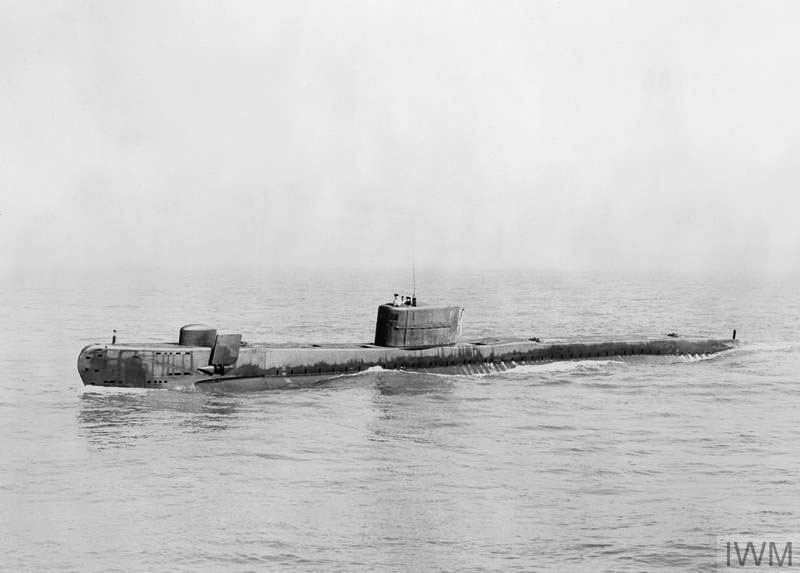
HMS Explorer was initially ordered on 26 August 1947 like her sister, but the design process was protracted due to technical difficulties (and budget cuts) top adapt the HTP system. She was liekly laid down in 1952, launched on 5 March 1954 and Christened on 28 November 1956, never “commissioned” per se, but she was given the identification number S30.
She gradually started sea trials but reports piled up as the suffered from many teething troubles on early (harbour) trials. So much so that her first captain never went to sea by fear of an accident. A small flotilla of rescue boats were always near or at the ready when she made underwater tests. These initial problems took time to master, and when achieve, HMS Explorer turned out to be very fast at 25 knots (46.3 km/h) thanks in part to the hull design. We can only guess how much she could have done with a teardrop hull. USS Albacore with a conventional diesel-electric powerplant manage to reach 33 knots indeed, far more impressive.
Explorer and her sister ship in addition to the reescue teams on the ready at all times had also the latest underwater escape technology: They were fitted with a one-man escape chamber and up to date escape breathing apparatus.
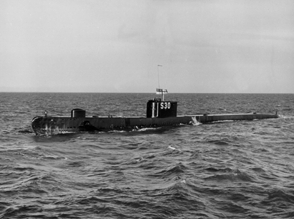 When underwater, the engine room was sealed and remotelly monitored, another safety measure. The engineers recalled seeing through a small porthole impressibe bowls of flames appearing on the top of the combustion chamber. It went so bad at one occasion that fumes suddenly filled the boat, despite the sealing, forcing to resurface in emergency and the crew to evacuate the pressure hull, stand on the upper casing until she returned to port. The “Exploder” as she was known while not being commissioned, serbed with the 3rd Submarine Squadron, and served independently for her sister. The ships part of her personal flotilla were the depot ship HMS Kingfisher, fuel carrier (converted water-carrier) RFA Spabeck, as well as tugs and a salvage vessel.
When underwater, the engine room was sealed and remotelly monitored, another safety measure. The engineers recalled seeing through a small porthole impressibe bowls of flames appearing on the top of the combustion chamber. It went so bad at one occasion that fumes suddenly filled the boat, despite the sealing, forcing to resurface in emergency and the crew to evacuate the pressure hull, stand on the upper casing until she returned to port. The “Exploder” as she was known while not being commissioned, serbed with the 3rd Submarine Squadron, and served independently for her sister. The ships part of her personal flotilla were the depot ship HMS Kingfisher, fuel carrier (converted water-carrier) RFA Spabeck, as well as tugs and a salvage vessel.
There are no precise logs of the details of her missiones and dives, but she stayed in home waters all her short career. HMS Explorer was indeed not decommissioned but stricken in 1965, having demonstrating the impossibility to use HTP as a reliable, safe power source. She was placed in reserve, laid dup, and scrapped after being sold to Thos. N. Ward in 1869.
 HMS Excalibur (S40)
HMS Excalibur (S40)
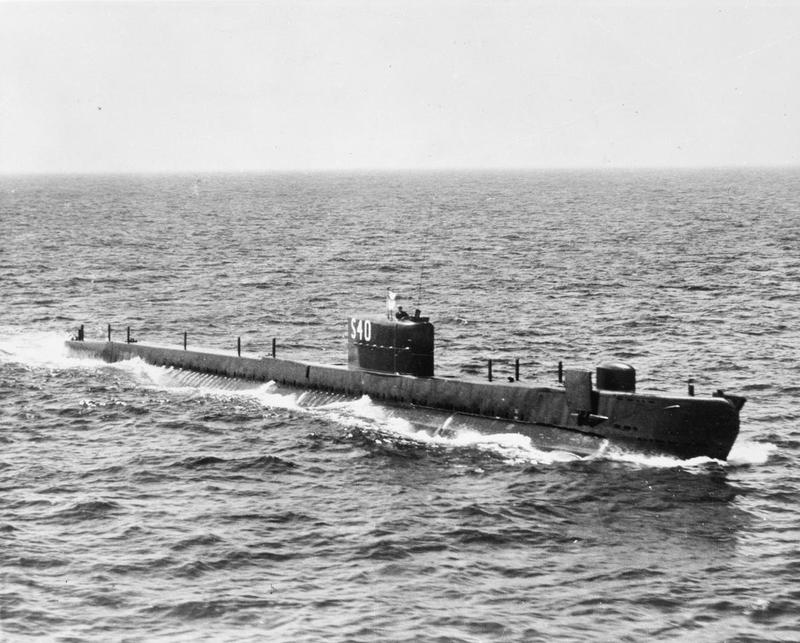
HMS Excalibur was Launched at Vickers, Barrow, on 25 February 1955 and completed on 22 February 1958 after a nine years long development. She was not commissioned, but attached like her sister to the 3rd Submarine Squadron based at HMNB Clyde, Faslane. Like her sister she depended on the depot ship HMS Kingfisher and fuel carrier RFA Spabeck. They served with ASW frigates, testing high speed tactics, and after HMS Dreadnought was commissioned, became her targets of choice for training. Details mission logs are not known, perhaps classified. In any case she did suffer froom many small scale “explosions”, but never had casualties or any serious accident at least officially reported. “Excruciator” was eventually mothballed in 1965 like her sister, having spent her usefulness. She was sold like her sister to Thos. N. Ward and scrapped in 1970.
Her Periscope was saved though, and is nown on golf course, to mark a sand dune, tell if the first green is clear by being risen. It is at the starter’s hut at the Golf House Club of Elie and Earlsferry, Scotland.
Commander Christopher Russell of HMS Explorer recalled the fireballs exiting her from her exhausts when starting up and had of course mixed feeling about the HTP:
The high-test peroxide was a very volatile substance and was carried in special bags outside the pressure hull. Occasionally there would be a ‘whoomph’ as one of them exploded. Looking into the engine room, which was unmanned when we were under way, one could see flames dancing along the top of the combustion chamber. We did not look upon her as being dangerous. The crew took the bangs and fires as a matter of course. Fire drill became a very practised affair
It’s really the impulse given in the US by Hyman Rickover to nuclear power for submarines that doomed HTP. USS Nautilus was the proof that this promising power source could be adapted, and the British advances in nuclear power, mostly pursued without US assistance, led to a civilian park but also opened the door for a military adaptation, which was in the end HMS Dreanought, the first of a long lineage of british SSNs. Conventional submarines construction went on in parrallel, but HTP was abandoned and relegated in the forgotten corridors of tech history. Explorer and Excalibur were scrapped in 1969/70 but proved AIP was a concept was to be a long quest…

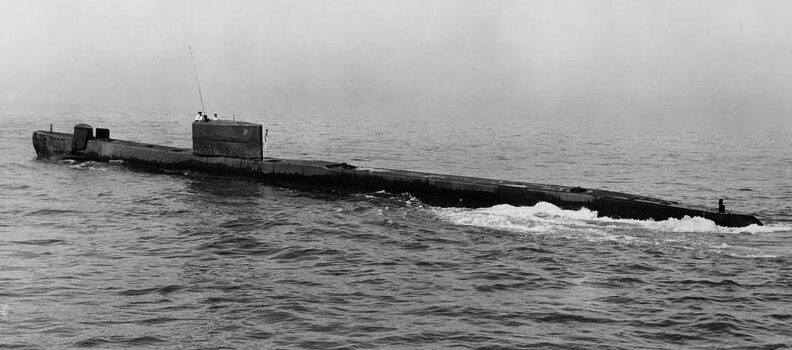

 Latest Facebook Entry -
Latest Facebook Entry -  X(Tweeter) Naval Encyclopedia's deck archive
X(Tweeter) Naval Encyclopedia's deck archive Instagram (@navalencyc)
Instagram (@navalencyc)





 French Navy
French Navy Royal Navy
Royal Navy Russian Navy
Russian Navy Armada Espanola
Armada Espanola Austrian Navy
Austrian Navy K.u.K. Kriegsmarine
K.u.K. Kriegsmarine Dansk Marine
Dansk Marine Nautiko Hellenon
Nautiko Hellenon Koninklije Marine 1870
Koninklije Marine 1870 Marinha do Brasil
Marinha do Brasil Osmanlı Donanması
Osmanlı Donanması Marina Do Peru
Marina Do Peru Marinha do Portugal
Marinha do Portugal Regia Marina 1870
Regia Marina 1870 Nihhon Kaigun 1870
Nihhon Kaigun 1870 Preußische Marine 1870
Preußische Marine 1870 Russkiy Flot 1870
Russkiy Flot 1870 Svenska marinen
Svenska marinen Søværnet
Søværnet Union Navy
Union Navy Confederate Navy
Confederate Navy Armada de Argentina
Armada de Argentina Imperial Chinese Navy
Imperial Chinese Navy Marinha do Portugal
Marinha do Portugal Mexico
Mexico Kaiserliche Marine
Kaiserliche Marine 1898 US Navy
1898 US Navy Sovietskiy Flot
Sovietskiy Flot Royal Canadian Navy
Royal Canadian Navy Royal Australian Navy
Royal Australian Navy RNZN Fleet
RNZN Fleet Chinese Navy 1937
Chinese Navy 1937 Kriegsmarine
Kriegsmarine Chilean Navy
Chilean Navy Danish Navy
Danish Navy Finnish Navy
Finnish Navy Hellenic Navy
Hellenic Navy Polish Navy
Polish Navy Romanian Navy
Romanian Navy Turkish Navy
Turkish Navy Royal Yugoslav Navy
Royal Yugoslav Navy Royal Thai Navy
Royal Thai Navy Minor Navies
Minor Navies Albania
Albania Austria
Austria Belgium
Belgium Columbia
Columbia Costa Rica
Costa Rica Cuba
Cuba Czechoslovakia
Czechoslovakia Dominican Republic
Dominican Republic Haiti
Haiti Hungary
Hungary Honduras
Honduras Estonia
Estonia Iceland
Iceland Eire
Eire Equador
Equador Iran
Iran Iraq
Iraq Latvia
Latvia Liberia
Liberia Lithuania
Lithuania Mandchukuo
Mandchukuo Morocco
Morocco Nicaragua
Nicaragua Persia
Persia San Salvador
San Salvador Sarawak
Sarawak Uruguay
Uruguay Venezuela
Venezuela Zanzibar
Zanzibar Warsaw Pact Navies
Warsaw Pact Navies Bulgaria
Bulgaria Hungary
Hungary

 Bundesmarine
Bundesmarine Dutch Navy
Dutch Navy Hellenic Navy
Hellenic Navy Marina Militare
Marina Militare Yugoslav Navy
Yugoslav Navy Chinese Navy
Chinese Navy Indian Navy
Indian Navy Indonesian Navy
Indonesian Navy JMSDF
JMSDF North Korean Navy
North Korean Navy Pakistani Navy
Pakistani Navy Philippines Navy
Philippines Navy ROKN
ROKN Rep. of Singapore Navy
Rep. of Singapore Navy Taiwanese Navy
Taiwanese Navy IDF Navy
IDF Navy Saudi Navy
Saudi Navy Royal New Zealand Navy
Royal New Zealand Navy Egyptian Navy
Egyptian Navy South African Navy
South African Navy






























 Ukrainian Navy
Ukrainian Navy dbodesign
dbodesign